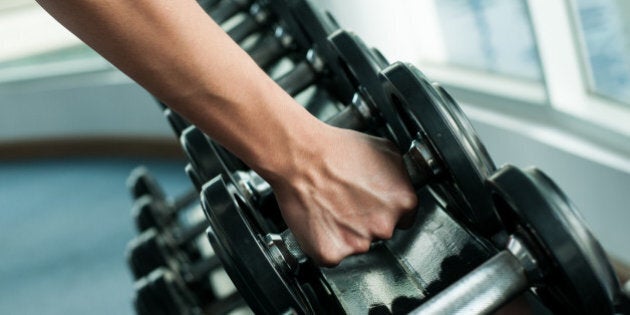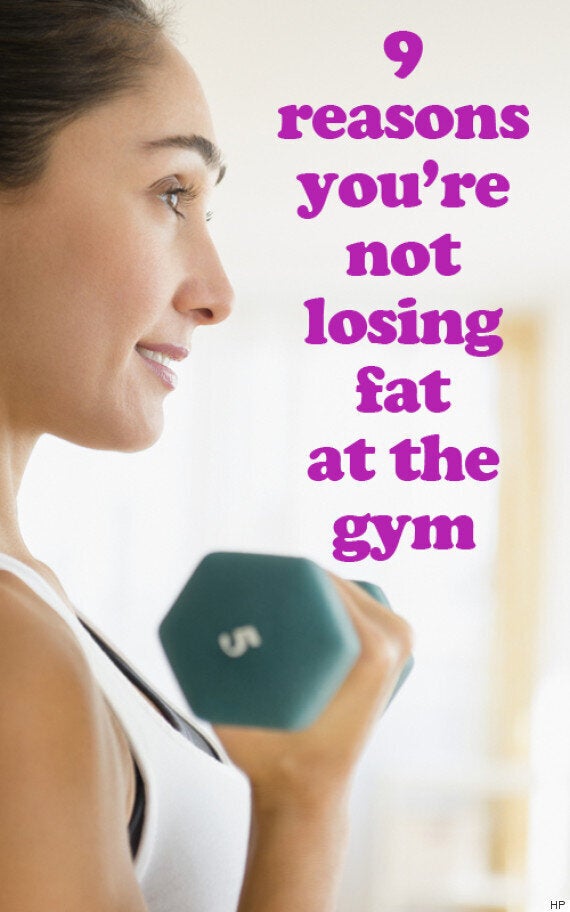
Hitting plateaus in training is never a welcome occurrence. Just when you think you've gotten into a groove, up surfaces a stymie that brings your results to a screeching halt. When it comes to fat loss, many will agree it's one of the hardest things to train for -- especially when the goal is to shed more than a pound or two. It's no secret that dropping significant amounts of body fat requires discipline and tactical training methods that are well planned out. Here's a checklist of things to avoid, that could stand in the way of a lean body.
Your Diet Sucks
This one is brutally obvious. We all know the saying "abs are made in the kitchen," and as hackneyed as it is, it rings true. All the hard work you do in the gym will be negated if you put the wrong things into your body to refuel. Many foods affect hormonal levels which can affect fat storage. You can't go wrong with plenty of meat and vegetables. And make H2O your go-to beverage. You'll learn to enjoy it.
You're Not Lifting at All
I've got bad news for cardioheads, pilates aficionados, and Zumba zealots. You're not doing much fat-burning by frequenting these training methods. You'll see some change, but a plateau is imminent from the moment you step into the first class. Remember, having more lean tissue on your body (muscle) will help increase metabolic rate and assist in burning fat. Long cardio-based endurance training sessions that many aerobics classes provide can counter the effects you may be seeking.
You're Lifting, but Not Heavy Enough
So you're hitting the weights. Good on you. But five and 10 pound dumbbells don't count. If you want to trigger change, you're going to have to create a stimulus that makes your body exert itself. The harder you work, the more calories you burn, and the more you'll train your strongest muscle fibres that are geared towards explosive strength and work best without oxygen present (which is why sets of 10 reps or less are quite effective). The net result will be oxygen debt (EPOC), and an increased metabolic demand that will last for hours after the workout.

You're Avoiding the Big Movements
Lifting weights? Check.
Heavy ones?Got it.
The problem is, you're doing leg extensions, lateral raises, and biceps curls. The large, multi-joint compound movements are your moneymakers when it comes to fat loss. The basic answer as to why they're more effective is because they're just plain harder. Twelve heavy squats will take more out of you than 12 heavy biceps curls or flyes.
The added calorie burn will come in handy and catalyze fat loss more effectively. As a by-product, big lifts like squats, deadlifts, overhead presses, bench press, and pull ups will help the spinal cord release essential lean-body hormones like testosterone and human growth hormone to help build muscle and lower fat levels. Use the big stuff, and leave the small movements for assistance training.
You're Resting Too Long
Training with weights requires adequate rest time in order to be strong enough for the next set -- but for sets of eight to 10 reps, try to rest no more than 90 seconds where you can. Doing so will keep the heart rate up and ensure you're training to the adequate levels of fatigue. Plus you'll be exercising your cardio while working against resistance, which is a double win.
Your Frequency is Down
You're not going to get any results at all if you only lift two days a week. It doesn't matter how hard you train. It's that simple.
Get in the gym four days per week. That's just over half. Make the time and train hard. A week is 168 hours long, and using four or five hours to devote to your fitness and health shouldn't be too much to ask. If it is, rearrange your schedule to put your health first.
Your Lifestyle Sucks
To add to the point above, what you do in your time outside the gym is a major defining factor as to whether you'll achieve sustainable results or are just wasting your time and energy. A relatively clean diet can be offset by plenty of bad food on weekends, or excessive alcohol consumption. Also, a stressful work environment may be unavoidable, but making sure you get a proper night's sleep can act to lower levels of a stress-induced hormone called cortisol -- which in turn will lower fat storage. Aim for seven hours a night, and put away your iPhone at lights-out!
You're Jogging
If you're gonna do steady-state cardio, at least know why you're doing it. Hitting the treadmill or great outdoors for a one hour run will do little for fat loss, but plenty for your cardiorespiratory capacity. Unfortunately, many tend to run long distances in pursuit of fat loss, so let's set the record straight. In some cases, a short jog or brisk walk can tap into fat loss (think 20 minutes after a solid weight training workout). But, we've learned that the body optimizes fat loss much more effectively through training that's anaerobic in nature. Shorter, intense bursts of effort in any regard will trigger change and yield fat loss benefits, while making sure the fast-twitch muscle fibres are being used.
Your Technique Needs Work
This is the easiest point of them all: learn to lift, and use full range of motion. You're cheating yourself if you only go down halfway in the squat -- even if the weight is heavy. On top of this, you're risking injury by practicing loaded versions of incomplete ranges, which don't apply to real life. Our bodies were made to move, and they should be trained accordingly. Of course, when fat loss enters the picture, we see that plenty of additional calorie burn and muscle activation comes from doing full ROM training. Don't cut corners in the name of big weight or lethargy!
ALSO ON HUFFPOST:
